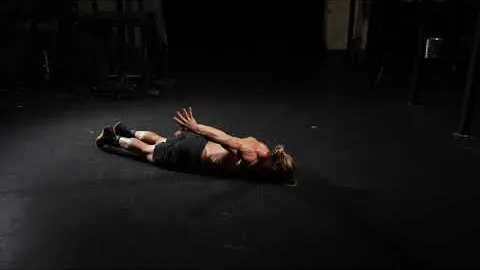
The Prone Controlled Articular Rotation exercise is a highly effective movement that targets the muscles and joints of the upper body, particularly the shoulders and spine. This exercise is commonly used in physical therapy and rehabilitation settings, but it can also be incorporated into regular fitness routines to improve overall strength, mobility, and stability.
What is Prone Controlled Articular Rotation Exercise?
The Prone Controlled Articular Rotation exercise, also known as CARs (Controlled Articular Rotations), involves performing slow, controlled rotations of the joints while in a prone position (lying face down). This exercise focuses on quality of movement rather than quantity, emphasizing joint articulation, and mobility.
Benefits of Prone Controlled Articular Rotation Exercise
Prone Controlled Articular Rotation exercise offers numerous benefits for individuals of all fitness levels. Some of the key benefits include:
Improved Joint Mobility: This exercise helps to improve joint mobility by increasing the range of motion and promoting synovial fluid circulation.
Enhanced Posture: By targeting the muscles of the upper body, including the shoulders and spine, this exercise can help improve posture and spinal alignment.
Increased Core Stability: Prone Controlled Articular Rotation exercise engages the core muscles, thus promoting core stability and strengthening.
Injury Prevention: By increasing joint mobility and stability, this exercise can help reduce the risk of injuries, particularly in the shoulders and spine.
How to Perform Prone Controlled Articular Rotation Exercise?
To perform the Prone Controlled Articular Rotation exercise, follow these steps:
Start by lying face down on a comfortable surface with your arms extended overhead and your palms facing the ground.
Slowly lift your right arm off the ground, maintaining a slight bend in your elbow. As you lift your arm, focus on the quality of movement and aim to rotate your shoulder joint to its maximum capacity.
Once you've reached the end range of motion, hold for a few seconds, and then start to slowly lower your arm back down to the starting position.
Repeat the same movement with your left arm, aiming to perform smooth and controlled rotations.
After completing the arm rotations, move onto the neck. Gently turn your head to the right as far as you comfortably can, holding the end range of motion for a few seconds before slowly returning to the starting position. Repeat on the left side.
Finally, move onto the spine. Starting from the base of your spine, slowly lift one vertebra off the ground at a time, focusing on articulating each segment of your spine. Once you reach the upper part of your back, reverse the movement and slowly lower your spine back down to the starting position.
Repeat the entire sequence for a few rounds, aiming to perform each rotation with control and precision.
Precautions and Tips
Here are some important precautions and tips to keep in mind while performing Prone Controlled Articular Rotation exercise:
Start with small movements and gradually increase the range of motion as your joints become more mobile.
Avoid forcing any movements that cause pain or discomfort. Listen to your body and don't push beyond your limitations.
Maintain a relaxed breathing pattern throughout the exercise. Inhale deeply as you prepare for each rotation and exhale as you perform the movement.
Keep your core engaged and your body aligned throughout the exercise. Avoid overarching your back or allowing your shoulders to elevate.
Conclusion
Prone Controlled Articular Rotation exercise is a valuable addition to any fitness routine due to its numerous benefits for joint mobility, posture, core stability, and injury prevention. By incorporating this exercise into your workouts, you can promote optimal upper body function and overall physical well-being. Remember to start with small movements and gradually increase the range of motion as you build strength and mobility. Consult with a healthcare professional before starting any new exercise routine, especially if you have any pre-existing medical conditions. Stay consistent and enjoy the benefits of this unique exercise!
If you're looking for a gym, fitness club or yoga studio, you've come to the right place.
You can find information about gyms in your area. Browse catalog of gyms and find gyms with classes which are you looking for.
On gym page you can find simple information like address, phone or website. You can find list of available classes. You can check availability of personal training or small group classes. On place page you can also see information about open hours.
You can find gyms near you with amenities, courts, studios and equipments.
Use our map to find gym at your city or district.
In Gym Navigator you can find list of exercises with movies for many body parts.
You can browse exercises catalog and find exercises the best of you.
You can also find exercises grouped into workout plans, which you can use to improve you body. Each routine show you exercises one by one and give you possibility to count you progress and count down rest time.